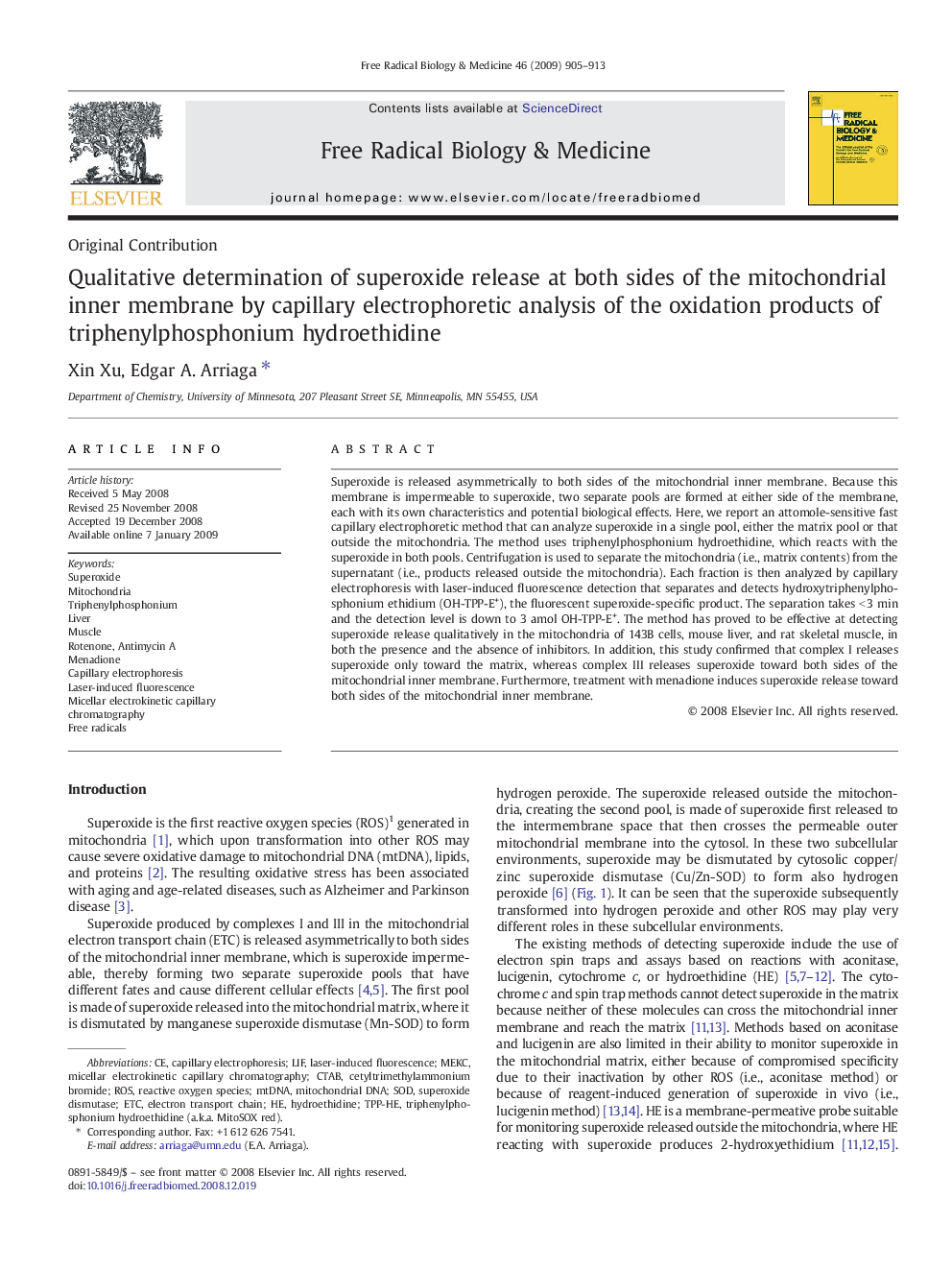| Article ID | Journal | Published Year | Pages | File Type |
|---|---|---|---|---|
| 1910185 | Free Radical Biology and Medicine | 2009 | 9 Pages |
Superoxide is released asymmetrically to both sides of the mitochondrial inner membrane. Because this membrane is impermeable to superoxide, two separate pools are formed at either side of the membrane, each with its own characteristics and potential biological effects. Here, we report an attomole-sensitive fast capillary electrophoretic method that can analyze superoxide in a single pool, either the matrix pool or that outside the mitochondria. The method uses triphenylphosphonium hydroethidine, which reacts with the superoxide in both pools. Centrifugation is used to separate the mitochondria (i.e., matrix contents) from the supernatant (i.e., products released outside the mitochondria). Each fraction is then analyzed by capillary electrophoresis with laser-induced fluorescence detection that separates and detects hydroxytriphenylphosphonium ethidium (OH-TPP-E+), the fluorescent superoxide-specific product. The separation takes < 3 min and the detection level is down to 3 amol OH-TPP-E+. The method has proved to be effective at detecting superoxide release qualitatively in the mitochondria of 143B cells, mouse liver, and rat skeletal muscle, in both the presence and the absence of inhibitors. In addition, this study confirmed that complex I releases superoxide only toward the matrix, whereas complex III releases superoxide toward both sides of the mitochondrial inner membrane. Furthermore, treatment with menadione induces superoxide release toward both sides of the mitochondrial inner membrane.
